Pricing Guides & Dictionary of Makers Marks for Antiques & Collectibles

LIMOGES PORCELAIN AND CHINAWARE:
Identification and Appraisal Guides
Join the most updated and complete collectibles research online - Learn more...
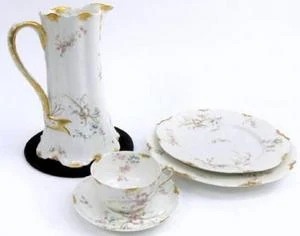 LIMOGES CHINA refers to porcelain chinaware & dinnerware made in the region of Limoges, France. Over the last two centuries, there have been more than 300 independent chinaware manufacturers and porcelain decorating studios that operated for a number of years, many of which are still in business. The vast majority of Limoges china is decorated with simple and elegant designs and is rarely gaudy or overbearing. The color palette of choice on Limoges porcelain is usually in pastel hues and incorporates matching shades and tones that create a very pleasing effect that often appeals to even the most discriminating of tastes.
LIMOGES CHINA refers to porcelain chinaware & dinnerware made in the region of Limoges, France. Over the last two centuries, there have been more than 300 independent chinaware manufacturers and porcelain decorating studios that operated for a number of years, many of which are still in business. The vast majority of Limoges china is decorated with simple and elegant designs and is rarely gaudy or overbearing. The color palette of choice on Limoges porcelain is usually in pastel hues and incorporates matching shades and tones that create a very pleasing effect that often appeals to even the most discriminating of tastes.
Limoges China Makers
Although some Limoges companies, such as Haviland-Limoges, produced a myriad of chinaware and service sets, the vast majority of Limoges china manufacturers & studios had a limited output. A common practice in Limoges was also that many studios would purchase blanks (undecorated whiteware) from nearby factories and then have them decorated by hand or using decals (transferware designs) prior to sale. This explains why we often see two or even three separate Limoges marks on many items. In most cases, the dates that these marks were in use are close together. However, at times, some remaining inventory of a company that closed may end up being purchased in bulk by a Porcelain Decorating Studio at some later time, who then, in turn, decorated them and sold them a few decades after the original manufacturer produced them.
The quality of Limoges china is exceptional and rarely disappoints. Most Limoges porcelain is fired at high temperatures, which contributes to their durability and long life. Any subsequent decoration that is applied is also fully and carefully glazed, and while usually quite transparent and thin, preserves the entire item and prevents crazing or other age-related wear, even with frequent use over a prolonged time. For these reasons and for their remarkable beauty, Limoges porcelain is the preferred chinaware or dinnerware in many homes. Additionally, it is not particularly expensive, especially as compared to other dinnerware of similar quality made elsewhere. This has expanded their popularity, especially for buyers who seek a relatively inexpensive alternative to other known pricey brands such as Meissen, Rosenthal, Sevres, Doulton, etc.
History of Limoges Porcelain
The name of Limoges comes from the official name of the town and region of Limousine in France, located about 200 miles south of Paris. This region is also known as Haute Vienne due to the river Vienne that runs through this region. The presence of this river and the discovery of rich deposits of Kaolin at nearby Saint Yrieix, an essential element of making porcelain, attracted many Potters and Porcelain companies to establish their operation in the area since the 1770s. Historically, the first Limoges Porcelain factory was established in 1770 by Massie, Grellet & Fourneira, which however did not do too well financially and was forced to close a few years later. Limoges china and dinnerware from this company can now be seen only in Museums and is extremely rare. Nevertheless, other entrepreneurs and skilled artisans quickly flocked to the area and began producing some of the finest porcelain chinaware of the time. This tradition has continued intensely to this day without any significant stoppages other than during WW I & II.
Although the general design style of most Limoges china remained fairly constant throughout the last two centuries, we often see some influence of the artistic norms that prevailed at certain periods, such as the Art Nouveau or Aesthetic Movement (ca 1880s - 1920s) and Art Deco immediately afterward.
Appraising and Researching Limoges Chinaware
When appraising Limoges China, it is important to consider the marks stamped on their underside. These reveal not only the maker but also the period that they were made. To accurately identify Limoges marks and properly authenticate Limoges China marks, please see our Porcelain & Pottery Marks Guides. Note that many Limoges marks are not necessarily those of their makers, but rather of trading companies that engaged in exporting those to other parts of Europe and particularly to America. In fact, many marks on Limoges china refer to US-based Importers in New York, Chicago & elsewhere, but can help in estimating their age.
Appraisal values of Limoges chinaware or tableware service sets depend heavily on the condition, completeness of the set, and very importantly the specific elegance of its decorative designs. Prices at auction do not vary much between similarly sized or decorated Limoges china sets, but tend to be higher for older pieces or richly decorated wares. See below for some examples from our Antiques Price Guides or view items in specific categories such as LIMOGES PORCELAIN BOXES or LIMOGES PLATES and LIMOGES VASES.
To read more on Limoges in general, please see one of our articles on Limoges Porcelain Marks.
Unlock the true value of your collection with our comprehensive research guides from identifying makers' marks to appraising all kinds of antiques and collectibles, including items featured in this article.
Our up-to-date information will give you an accurate understanding of your items' worth. Don't miss out on this valuable resource - visit our research tools today!
In addition to some examples shown below on this page, you can also search our price guide for your own treasures.
Examples of related items from our Price Guides
-
 (32 PC) LIMOGES JEAN POUYAT TEA SERVICE
[more like this]
(32 PC) LIMOGES JEAN POUYAT TEA SERVICE
[more like this]
-
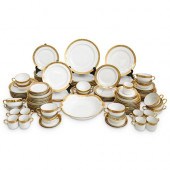 (104 PC) B & CO. LIMOGES PORCELAIN DINNE
[more like this]
(104 PC) B & CO. LIMOGES PORCELAIN DINNE
[more like this]
-
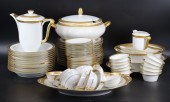 LOT OF ASSORTED LIMOGES GILT TRIM PORCEL
[more like this]
LOT OF ASSORTED LIMOGES GILT TRIM PORCEL
[more like this]
-
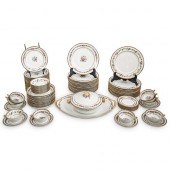 (86 PC) R & C RAYNAUD LIMOGES DINNERWARE
[more like this]
(86 PC) R & C RAYNAUD LIMOGES DINNERWARE
[more like this]
-
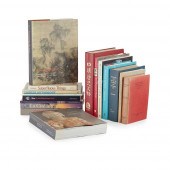 [A PRIVATE SCOTTISH COLLECTION, EDINBURG
[more like this]
[A PRIVATE SCOTTISH COLLECTION, EDINBURG
[more like this]
-
 LOT OF CHINESE PAPER CURRENCY, 1935 - 19
[more like this]
LOT OF CHINESE PAPER CURRENCY, 1935 - 19
[more like this]
-
 COLLECTION OF ART REFERENCE BOOKS
ON ASI
[more like this]
COLLECTION OF ART REFERENCE BOOKS
ON ASI
[more like this]
-
 COLLECTION OF LIMOGES, RUCHAUD AND OTHER
[more like this]
COLLECTION OF LIMOGES, RUCHAUD AND OTHER
[more like this]
-
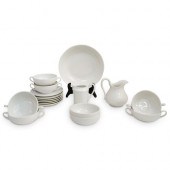 (18 PC) LIMOGES WHITE PORCELAIN GROUPING
[more like this]
(18 PC) LIMOGES WHITE PORCELAIN GROUPING
[more like this]
-
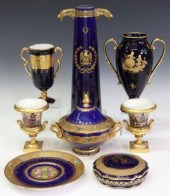 (7) FRENCH PORCELAIN VASES & BOXES, INCL
[more like this]
(7) FRENCH PORCELAIN VASES & BOXES, INCL
[more like this]
-
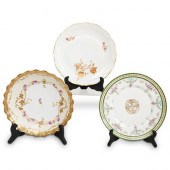 (3 PCS) ANTIQUE LIMOGES PORCELAIN SERVIN
[more like this]
(3 PCS) ANTIQUE LIMOGES PORCELAIN SERVIN
[more like this]
-
![[CHINESE CULTURE]
A group of](/images/chinese-culture-a-group-of--346a81-medium.jpg) [CHINESE CULTURE]
A group of reference
[more like this]
[CHINESE CULTURE]
A group of reference
[more like this]
There are many more auction results available to our members...





